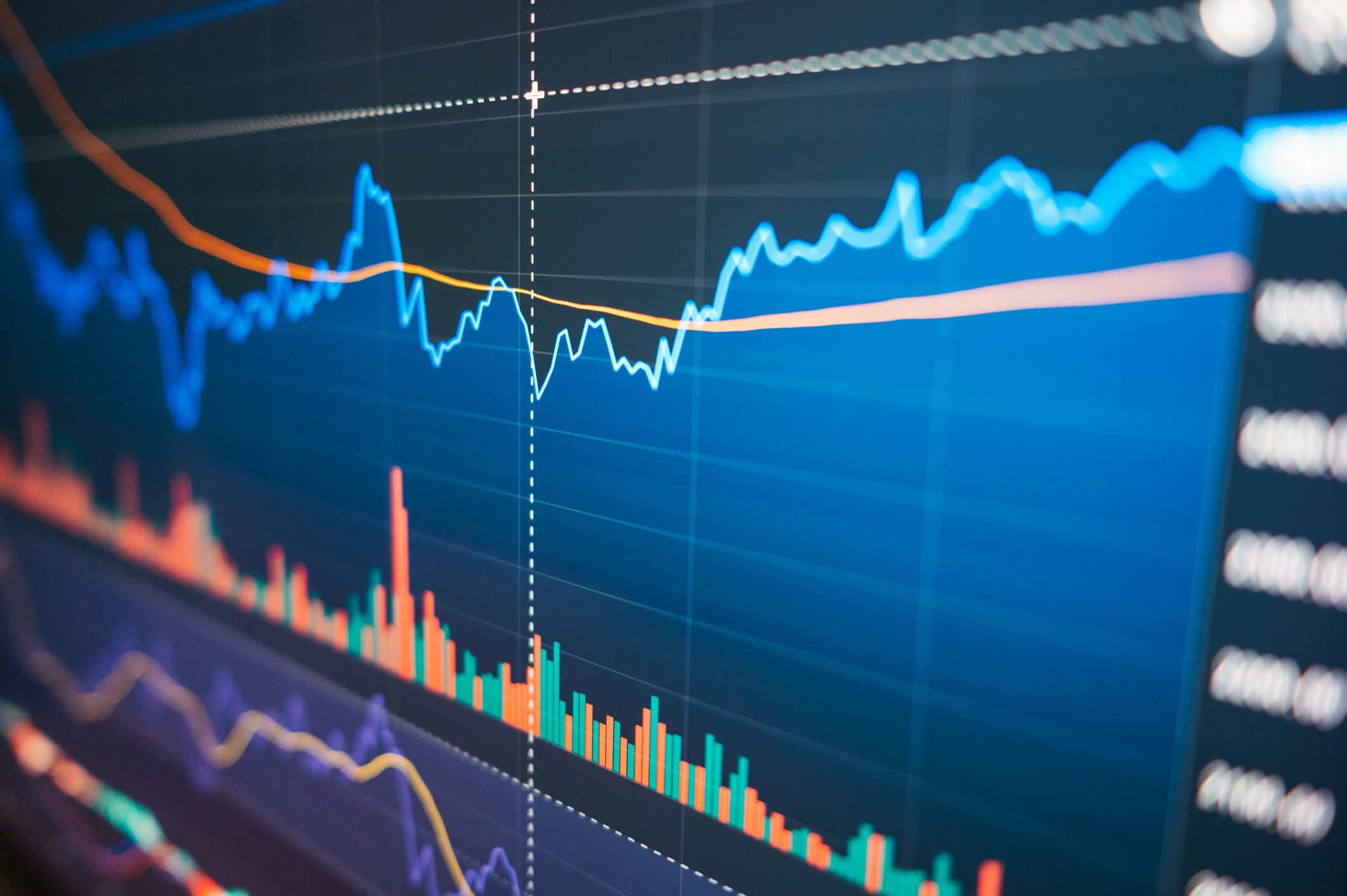5 Picks From the Sohn Investment Conference
A closer look at four stocks and one ETF recommended during the annual gathering of hedge fund managers and investing gurus.

General Motors (symbol GM) and Caterpillar (CAT) are both industrial giants, sensitive to swings in the global economy. But the stocks may be on very different paths these days. GM should keep climbing as sales expand in China and the U.S. But Caterpillar may slump as its customers in the mining, energy and construction industries keep a tight rein on spending for CAT’s equipment.
Those are the views, at least, of hedge fund manager David Einhorn, who discussed the stocks at the Sohn Investment Conference in New York City on May 4. Einhorn, president of Greenlight Capital, was one of several speakers pitching ideas at the conference, which aims to raise money for pediatric cancer research. Hedge fund guru Stanley Druckenmiller, former chief investment officer for George Soros and current CEO of Duquesne Family Office, advised buying gold. Bond fund manager Jeffrey Gundlach, head of DoubleLine Capital, made a case for betting against utility stocks and loading up on mortgage real estate investment trusts.
Some of the investments pitched at the conference look quite risky—buying Greek bank stocks, for example, as one fund manager proposed. But a few of the stocks and other ideas do look intriguing.

Sign up for Kiplinger’s Free E-Newsletters
Profit and prosper with the best of expert advice on investing, taxes, retirement, personal finance and more - straight to your e-mail.
Profit and prosper with the best of expert advice - straight to your e-mail.
GM, for instance, trades at less than 6 times estimated 2016 earnings—about one-third of the Standard & Poor’s 500’s P/E of 17. GM looks so cheap because many on Wall Street believe the company’s earnings are peaking, reaching $5.68 per share this year and $5.89 in 2017. Profits are expected to decline after that as growth of U.S. auto sales slows. Earnings could hit the skids if the U.S. falls into recession, too, or China’s economy slips more than expected. (All prices as of May 5.)
Yet Einhorn says GM is in better shape than Wall Street thinks. Sales in China should expand in the next few years, he argues. GM’s European business is in the midst of a restructuring that will pay off with higher profit margins. And although sales growth is slowing in the U.S., it should remain healthy for at least a few more years. GM should generate ample cash to keep its dividend afloat and buy back a significant number of shares. With a handsome 5% dividend yield, the stock also pays much more than the S&P’s 2.2%. Says Einhorn, there’s “magic” in the stock.
The same can’t be said for Caterpillar, which Einhorn views as ripe for a fall and recommends betting against. With the stock up more than 29% from its 52-week low of about $56, many on Wall Street seem to think the industrial equipment maker’s sales have hit bottom and will start recovering. But to Einhorn, that’s wishful thinking. He figures coal and iron ore mining companies—big customers of CAT’s gear—won’t need nearly as much equipment as analysts forecast. The oil bust will continue to depress sales to the energy industry. Rail companies won’t ramp up spending on new machinery. And many construction companies are renting equipment, rather than buying it, limiting “pent-up” demand for new gear. CAT’s annual earnings could tumble to around $2 a share from $5.02 a share in 2015, Einhorn argues, taking the stock down by about 50% from recent levels.
Betting on Bezos
Far afield from the deep value camp sits Amazon.com (AMZN), which still looks attractive. Sure, the stock has climbed 56% over the past year, and its P/E ratio looks astronomical at 121 times estimated 2016 earnings. But don’t be deterred, says Chamath Palihapitiya, founder of venture capital firm Social Capital. Over the next decade, the stock could be worth a stunning $3 trillion, he estimates, returning an average 24% a year from here. The company’s current market value is $311 billion. “If you believe in the Internet, you have to believe in Amazon,” he says.
As Palihapitiya sees it, Amazon CEO Jeffrey Bezos aims to dominate two enormous areas on the Web: retail sales and cloud computing. In retail, Amazon’s customer base, growing 10% a year, could more than double, from 304 million at the end of 2015 to 788 million a decade from now. If Amazon can hit that goal, it could rack up more than $1 trillion in annual retail sales by 2025, Palihapitiya estimates.Amazon Web Services, meanwhile, is rapidly dominating the cloud—used by companies large and small for data storage, software and other digital services. If the Web services business can keep up its rapid expansion, its market value would top $1.5 trillion by 2025, estimates Palihapitiya. Moreover, he has faith that Bezos is likely to put Amazon’s cash to work in ways that will benefit shareholders, adding another $500 billion in market value. “He’s building the most durable company in the world. If you believe in buying things, you have to own Amazon,” Palihapitiya says.
In Search of Value
In the oil patch, Anglo-Dutch energy giant Royal Dutch Shell (RDS.A) looks attractive for its 7.4% dividend yield and potential for share gains, says Nick Tiller, a former Fidelity energy fund manager who now runs a hedge fund, Precocity Capital.
Shell’s $54 billion purchase of British natural gas giant BG Group, completed this year, is diversifying the firm away from oil production. Thanks partly to BG, Shell’s total production of oil and gas is expected to grow about 8% a year, well above growth rates for other “super-majors” such as ExxonMobil (XOM) and Chevron (CVX). Moreover, Shell is slashing overhead costs and ratcheting down its budget for drilling and exploration—moves that should boost profitability and leave more cash for dividend hikes and share buybacks.If oil prices collapse again, the stock would suffer. But oil prices are more likely to stay afloat and could inch up as global production growth tapers off (due partly to huge cuts in capital spending budgets by major oil companies). With Shell’s heavy investments now behind it, the stock “looks like a good value,” says Tiller.
Utility stocks have been winners this year, climbing an average 15%. But DoubleLine Capital’s Gundlach thinks the stocks are now too richly valued to offer much upside. Trading at 18 times earnings, the S&P 500 utility stock index looks more richly valued than the broader market. Yet utilities are expected to increase earnings at an annualized pace of just 5.4% over the next three to five years, about half the market’s expected growth rate. With a 3.3% dividend yield, utilities don’t pay significantly more than the S&P 500’s 2.2% yield either.
Gundlach’s recommendation: Bet against utilities by shorting the Utilities Select Sector SPDR ETF (XLU). Short-sellers sell borrowed shares, aiming to buy back the stock later at a lower price, return the borrowed shares and pocket the difference. It’s a risky strategy because investors can pile up losses if the shorted stocks rise in value. Moreover, short-sellers are on the hook for the underlying dividend payments of the shares, which can add up in the case of utilities.
Utility valuations may be excessive, moreover, but that doesn’t mean the stocks will fall. Income investors may still gravitate to utility stocks if interest rates remain at rock-bottom lows. And even if the stocks don’t edge up much, they could still deliver annual total returns of 5% to 6%, including dividends and modest share-price gains.
If you don’t want to bet against utilities, another compelling income play is the iShares Mortgage Real Estate Capped ETF (REM), which Gundlach does like. Mortgage REITs borrow money at short-term rates and use it to buy residential or commercial mortgages. Higher short-term rates would squeeze their profit margins, but Kiplinger forecasts just two modest rate hikes this year by the Federal Reserve, keeping a lid on rates. The ETF yields a stunning 11.6%. Yet its underlying holdings still look cheap, Gundlach says.
Small Stock, Big Potential
With a market value of $779 million, Kraton Performance Polymers (KRA) is one of the smaller chemical companies on the market. But shares of Kraton, which makes polymer building blocks used in diaper elastic, toothbrushes and other products, could more than double over the next few years, says David Rosen, until recently manager of the hedge fund Rubric Capital, who says the stock looks “substantially undervalued.”
Although Kraton has surged 70% in the past three months—including a 15% jump on May 4, the day Rosen discussed it—the stock may still have plenty of gas in its tank. Kraton made a big acquisition last year, buying Arizona Chemical for $1.4 billion in cash. Arizona’s products will help Kraton diversify into more specialty chemicals with higher profit margins. And as the combined company cuts costs and reduces debt, more cash flow should fall to the bottom line. Already, the deal seems to be paying off: With Arizona’s products in its sales mix, Kraton reported net income of $2.84 a share in the first quarter of 2016, compared with a loss of 30 cents a share a year earlier.
Trading at 7 times estimated 2017 earnings, the stock looks cheap. That’s partly because Kraton’s sales prior to 2016 disappointed, declining from $1.4 billion in 2012 to about $1 billion in 2015. Propped up by Arizona, though, business should pick up. Indeed, analysts expect earnings to jump by 29% in 2017, reaching $3.58 per share. As Rosen sees it, the stock should surpass $60 within the next two years, a big leap from its current price of $25.
Get Kiplinger Today newsletter — free
Profit and prosper with the best of Kiplinger's advice on investing, taxes, retirement, personal finance and much more. Delivered daily. Enter your email in the box and click Sign Me Up.

-
 10 Major AI Companies You Should Know
10 Major AI Companies You Should KnowThese 10 AI companies are at the forefront of machine learning. Find out how they’re driving innovation and jostling to be the biggest players in the game.
By Tom Taulli Published
-
 How Baby Boomers and Gen Xers Are Redefining Retirement Living
How Baby Boomers and Gen Xers Are Redefining Retirement LivingBoth generations need to embrace change and leverage real estate as a dynamic asset in their retirement planning. Here's how financial advisers can help, too.
By David Conti, CPRC Published
-
 Why Is Warren Buffett Selling So Much Stock?
Why Is Warren Buffett Selling So Much Stock?Berkshire Hathaway is dumping equities, hoarding cash and making market participants nervous.
By Dan Burrows Published
-
 If You'd Put $1,000 Into Google Stock 20 Years Ago, Here's What You'd Have Today
If You'd Put $1,000 Into Google Stock 20 Years Ago, Here's What You'd Have TodayGoogle parent Alphabet has been a market-beating machine for ages.
By Dan Burrows Last updated
-
 Stock Market Today: Stocks at Record Highs as Earnings Season Ramps Up
Stock Market Today: Stocks at Record Highs as Earnings Season Ramps UpMarkets continued where they left off last week amid rising optimism over corporate profits.
By Dan Burrows Published
-
 Stock Market Today: Stocks Retreat Ahead of Nvidia Earnings
Stock Market Today: Stocks Retreat Ahead of Nvidia EarningsMarkets lost ground on light volume Wednesday as traders keyed on AI bellwether Nvidia earnings after the close.
By Dan Burrows Published
-
 Stock Market Today: Stocks Edge Higher With Nvidia Earnings in Focus
Stock Market Today: Stocks Edge Higher With Nvidia Earnings in FocusNvidia stock gained ground ahead of tomorrow's after-the-close earnings event, while Super Micro Computer got hit by a short seller report.
By Karee Venema Published
-
 Stock Market Today: Dow Hits New Record Closing High
Stock Market Today: Dow Hits New Record Closing HighThe Nasdaq Composite and S&P 500 finished in the red as semiconductor stocks struggled.
By Karee Venema Published
-
 Stock Market Today: Stocks Pop After Powell's Jackson Hole Speech
Stock Market Today: Stocks Pop After Powell's Jackson Hole SpeechFed Chair Powell's Jackson Hole speech struck a dovish tone which sent stocks soaring Friday.
By Karee Venema Published
-
 Stock Market Today: Stocks Drop Ahead of Powell's Jackson Hole Speech
Stock Market Today: Stocks Drop Ahead of Powell's Jackson Hole SpeechSentiment turned cautious ahead of Fed Chair Powell's highly anticipated speech Friday at the Jackson Hole Economic Symposium.
By Karee Venema Published